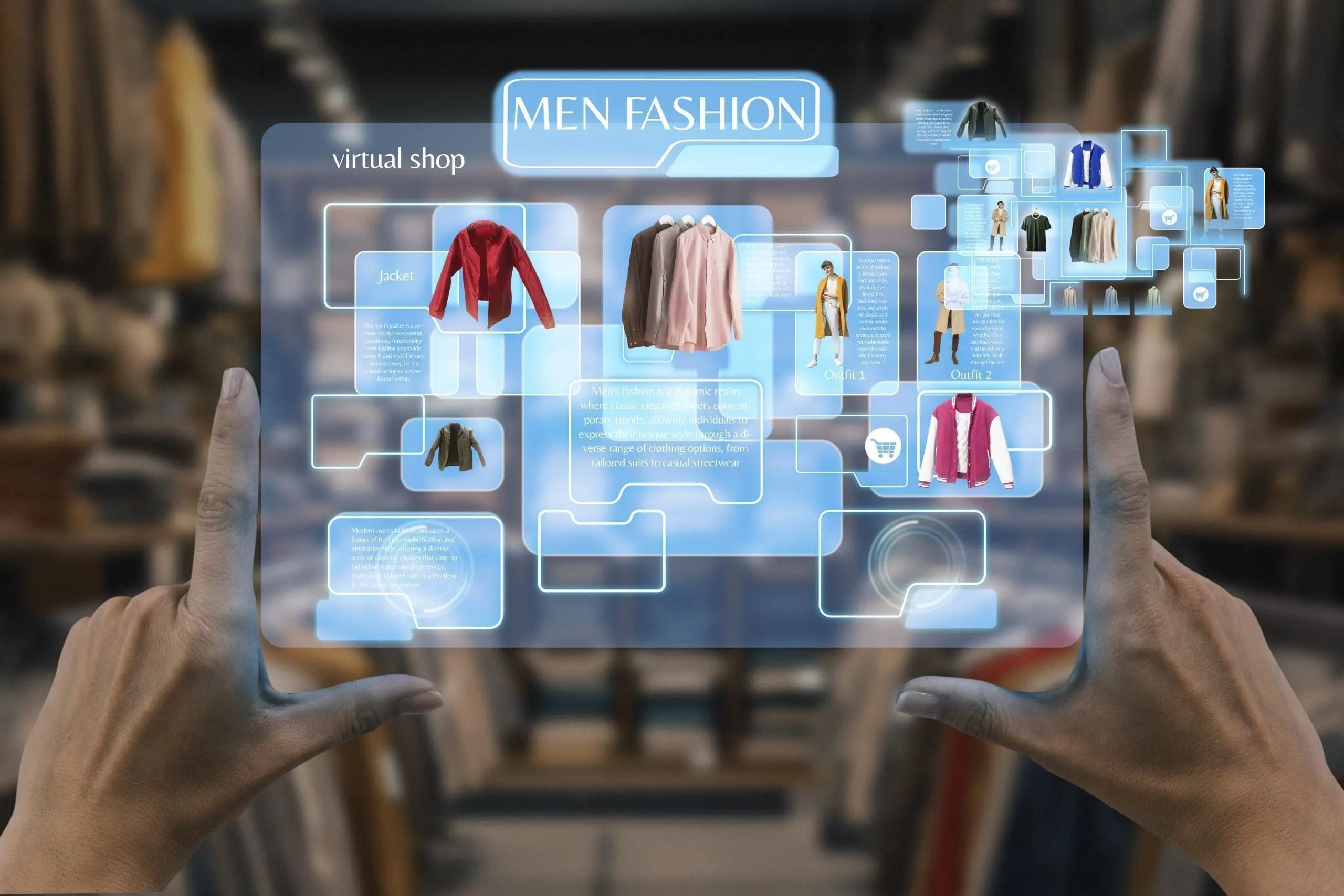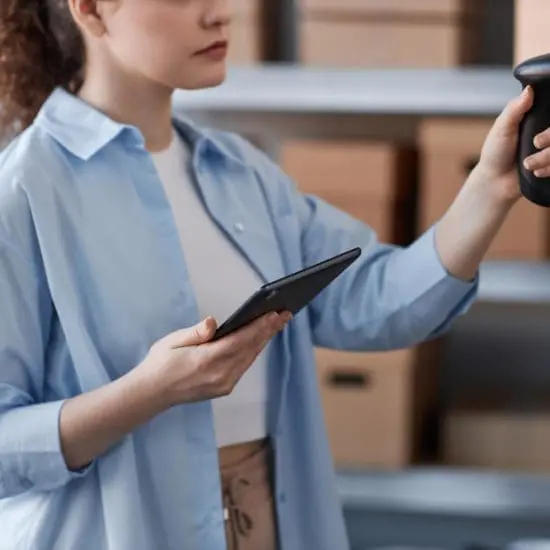
The world of luxury fashion retail is experiencing a captivating metamorphosis, propelled by the ever-increasing influence of the digital age. Consumers are increasingly gravitating towards online platforms to browse and purchase high-end fashion items from retailers, demanding convenience and a seamless shopping experience. This shift has necessitated a corresponding evolution in the way luxury brands and retailers operate in the luxury goods marketplace.
This article delves into the fascinating journey of luxury fashion retail in the digital landscape, highlighting the rise of luxury fashion marketplaces and their pivotal role in reshaping the industry. We’ll delve into the challenges faced by traditional retail models and showcase how innovative platforms like HighFashionExchange.com are fostering collaboration and offering solutions for a more efficient future with the focus on improving brick and mortar shops.
The Obstacles of Traditional Luxury Distribution Retail
For decades, the luxury fashion industry thrived on a brick-and-mortar model. High-end fashion retailers offered a curated selection of designer goods, providing a personalised service experience. However, the digital revolution has presented several significant challenges to this established system in the luxury fashion marketplace.
Nevertheless the physical space where purchases are conducted remains the embodiment and essence of luxury fashion retail.
Inventory Management in Luxury Fashion Retailers
Maintaining a diverse stock of luxury goods can be a delicate balancing act. Predicting trends and consumer demand can be a tricky endeavour in the luxury fashion marketplace, leading to overstocked positions for high-end fashion retailers. This not only ties up valuable capital but also diminishes the exclusivity of certain items. Imagine a scenario where a high-end fashion boutique in London has several unsold designer handbags from a particular season. Traditionally, these items would remain on their shelves for months, taking up valuable space in high-end fashion retailers and hindering the store’s ability to invest in new collections.
Limited Reach
Physical stores have geographical limitations, restricting their customer base to a specific region. In today’s globalised world, high-end fashion brands and retailers need to cater to a broader audience, encompassing international markets. A boutique in Paris may have a loyal clientele. However, it has limited reach, for example, to prospective clients in Shanghai.
Adapting to E-commerce
The rise of online shopping has fundamentally changed consumer behaviour. High-end fashion retailers need to bridge the gap between the in-store experience, known for its personalised touch, and the convenience of online platforms. While some luxury fashion brands have established their e-commerce stores, this requires significant investment in online infrastructure and marketing to dominate the luxury goods marketplace.
The Rise of Luxury Fashion Marketplaces
Luxury fashion online retailers, also known as B2B luxury fashion marketplaces or B2B fashion platforms, have emerged as a powerful force in the digital age, offering a compelling alternative to the traditional model. These online platforms connect authorised high-end fashion retailers, creating a space for seamless luxury distribution.
Imagine a network where authorised retailers of high-end fashion brands can buy and sell excess inventory from other authorised sellers. This fosters a win-win situation for all parties involved.
Here’s how these marketplaces are revolutionising the industry:
Reduced Overstock
Luxury goods marketplaces provide a platform for retailers to buy and sell excess inventory from other authorised sellers. This allows them to free up capital tied up in overstocked positions, reinvesting in new collections, and maintaining a healthy cash flow. For example, a boutique in London with an excess stock of designer handbags from a particular season can list them on a luxury fashion marketplace. Authorised retailers from other parts of the world can then purchase this excess stock, allowing the London boutique to recoup their investment and free up valuable space for new collections.
Increased Reach
Marketplaces act as a global marketplace, connecting sellers with a broader pool of potential buyers across geographical boundaries. This empowers brands and retailers to tap into new markets and expand their customer base significantly. A boutique in Paris can list its unique selection of luxury goods on a B2B fashion platform, making them accessible to authorised retailers across the globe. This opens doors to new customer segments in the luxury goods marketplace and significantly increases the potential for sales.
Enhanced Efficiency
Online platforms streamline the buying and selling process, eliminating the need for manual negotiations and paperwork. This translates to cost savings and increased efficiency for all participants in the ecosystem. Imagine the time and resources a high-end fashion retailer would typically expend trying to sell excess inventory through traditional channels. B2B luxury fashion platforms eliminate this hassle by providing a centralised platform for efficient transactions in the luxury fashion marketplace.
HighFashionExchange.com : A B2B Solution for the Luxury Fashion Marketplaces
HighFashionExchange.com stands out as a prime example of a B2B platform specifically designed to address the needs of the luxury fashion sector. Here’s what makes HighFashionExchange.com unique:
Focus on Authorised Retailers
Unlike some marketplaces that allow for peer-to-peer transactions, HighFashionExchange.com strictly works with authorised resellers and retailers of luxury brands. This ensures authenticity and maintains the prestige associated with luxury goods. By focusing on authorised retailers, HighFashionExchange.com safeguards the brand reputation and exclusivity of the luxury items being traded in the luxury fashion marketplace.
Curated Platform
HighFashionExchange.com operates as a curated luxury fashion marketplace, ensuring the quality and value of the items listed. This ensures trust and confidence among participating high-end fashion retailers. Unlike some open online marketplaces, HighFashionExchange.com has a rigorous vetting process for sellers. This means high-end fashion retailers can be confident that they are buying authentic luxury goods from reputable sources.
Commission-Based Model
HighFashionExchange.com utilises a commission-based model, which only generates revenue when successful transactions take place. This incentivizes them to create a user-friendly platform that facilitates efficient business deals in the luxury fashion marketplace. By only earning money when transactions occur, HighFashionExchange.com aligns its interests with those of the high-end fashion retailers using the platform. This fosters a collaborative environment where both parties benefit from successful transactions.
Fostering Collaboration in the Digital Age of Luxury Goods Marketplace
The emergence of luxury fashion marketplaces like HighFashionExchange.com marks a significant shift towards a more collaborative future for the luxury fashion industry. These platforms enable authorised high-end fashion retailers to work together, creating a win-win situation for all stakeholders.
Brands Benefit
Brands benefit from authorised high-end fashion retailers’ efficient inventory management. By facilitating the movement of excess stock among authorised retailers, luxury fashion marketplaces like HighFashionExchange.com help to prevent overstocking and subsequent devaluation of the Brand through heavy discounting. This can lead to better brand control and boost sales, as authorised retailers are more likely to invest in new collections when they are confident they can reduce their risks with HighFashionExchange.com immediately.
Retailers Benefit
High-end fashion retailers benefit from reduced overstock, increased reach, and a more efficient buying and selling process. As discussed previously, luxury goods marketplaces provide a solution to the problem of overstocked positions.
Additionally, these platforms offer access to a broader customer base and streamline the buying and selling process in the luxury goods marketplace. This combination of factors can significantly improve sales for high-end fashion retailers.
It has been researched by University of Padua, Italy in 2011 that shops can increase their sales by 30%, if they were fully stocked!
Consumers Benefit
Consumers benefit from a more comprehensive selection of luxury goods, often at competitive prices. Luxury goods marketplaces create a more competitive environment for high-end fashion retailers, which can lead to more competitive pricing for consumers.
Additionally, by enabling the movement of excess stock, luxury goods marketplaces can ensure a wider variety of luxury goods are available. This benefits consumers who are looking for specific items or who may need access to a wide array of luxury boutiques distributed in their local area.
Building a Sustainable Future for Luxury Fashion Retailers
The digital transformation has undoubtedly reshaped the landscape of luxury fashion retail. The rise of luxury fashion marketplaces offers a dynamic solution to the challenges faced by traditional models. By fostering collaboration, streamlining processes, and offering wider reach, these platforms such as HighFashionExchange.com are paving the way for a more efficient and sustainable future for the luxury fashion industry.
Here are some key aspects that contribute to a sustainable future in this space:
Reduced Environmental Impact
By facilitating the movement of excess stock, luxury fashion marketplaces can help to reduce the overall amount of luxury goods that are produced. This can lead to a lower environmental impact, as the production of luxury goods often requires significant resources in which HighFashionExchange.com can bring about through its efforts in improving the existing distribution pattern.
Transparency and Authenticity
Luxury fashion marketplaces like HighFashionExchange.com, with their focus on authorised retailers and curated platforms, can contribute to greater transparency and authenticity in the luxury goods marketplace. This fosters trust among consumers and protects the reputation of luxury brands.
Evolving with Technology
As technology continues to grow, so too will the landscape of luxury fashion retail. Luxury fashion marketplaces will need to adapt and innovate to remain competitive. This could involve integrating new technologies, such as artificial intelligence, to provide personalised recommendations to retailers and streamline the buying process.
A Thriving Future for Luxury Fashion with HighFashionExchange.com
The digital transformation has undeniably reshaped the way we shop for luxury goods. Luxury fashion marketplaces are at the forefront of this change, offering a solution-oriented approach that benefits brands, retailers, and consumers alike. As the digital landscape continues to evolve, one thing remains certain – luxury fashion will continue to thrive in the online space, offering an unparalleled shopping experience for discerning customers worldwide.





